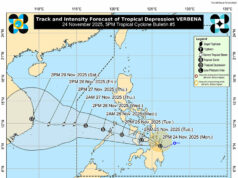Filipinos starting to go cashless — Visa
By Mark T. Amoguis, Senior Researcher
IN A COUNTRY where cash still remains king, majority of Filipinos are starting to embrace cashless payments, Visa, Inc. said in a report.
Almost eight out of 10 Filipinos (75%) plan on using their cards for payments instead of cash, according to data from the 2018 Visa Consumer Payment Attitudes Study released recently.
The study noted that two out of three respondents in the country have tried going cashless.
Due primarily to convenience, the study added that close to 60% of Filipino respondents have gone cashless for at least a few days.
Meanwhile, 82% of Filipinos surveyed were aware of contactless card payments, up from 71% previously.
Despite these developments, seven in 10 Filipinos still prefer to use cash, according to the study.
Between 2016 and 2018, the number of Filipinos using contactless payments remained unchanged at 27%.
“Visa’s data also shows a similar trend where we continue to see double-digit growth in terms of spend and transactions made by Filipino cardholders,” Visa Country Manager for the Philippines and Guam Dan Wolbert said in a statement.
“There is still a lot of opportunity for cash displacement in the Philippines and we continue to work on a few priorities in the Philippines such as grow digital payments usage in the country and expand merchant acceptance footprint for digital payments,” Mr. Wolbert said.
Card spend of Filipinos increased 19% year on year, while transaction count went up 21% annually, Mr. Wolbert said, citing VisaNet data as of the quarter ended June this year.
He attributed this transaction growth to the rise of e-commerce for digital purchases such as subscription programs, ride-hailing services, and travel platforms.
“We have seen strong growth in contactless payments in the Philippines, especially after partnerships with key merchants such as SM and Robinsons who have implemented contactless payments acceptance across their stores in the Philippines,” Mr. Wolbert said.
SM and its partner boutiques started accepting Visa contactless payment in 2018, while the Robinsons Retail group started offering this payment scheme in its department store chains and supermarkets earlier this month.
“We will continue to engage more merchants and banks to promote the benefits of contactless payments,” he added.
Nearly eight out of 10 Filipinos (78%) prefer shopping at places that offer cashless payments, increasing from 58% in 2017, the study showed.
Visa noted that Filipinos are keen to use e-payments for transportation.
According to the study, almost nine out of 10 Filipinos are generally supportive of e-payments for transportation which includes jeepneys, buses, trains, taxis, and private car hires.
The study also noted the growing confidence in security for cashless payments.
Almost eight in 10 Filipinos or 74% agree that cashless payment methods are safer than cash, up from 42% in the 2017 edition of the study, while 75% (from 47% previously) of respondents plan to use cashless payment methods more often and move away from cash.
The latest Visa Consumer Payment Attitudes Survey was conducted via online questionnaire in July 2018 and had 500 Filipino respondents spread across the country whose monthly incomes range from P12,000 to P84,000.
The primary aim of the study is to understand the behaviors of digital consumers and their interest in using digital payments and new technology.
The Bangko Sentral ng Pilipinas targets to increase the share of digital payments to 20% by next year of total transactions from a measly 1% recorded in 2013.
Under the National Retail Payment System, the central bank plans to shift cash-heavy transactions to digital avenues. In implementing this, BSP launched two clearing houses: PESONet for batch payments in 2017 and InstaPay for small value payments in 2018.



